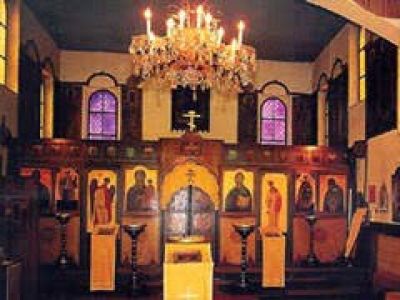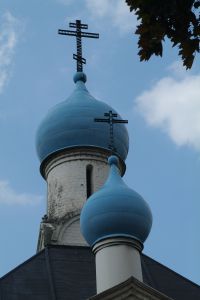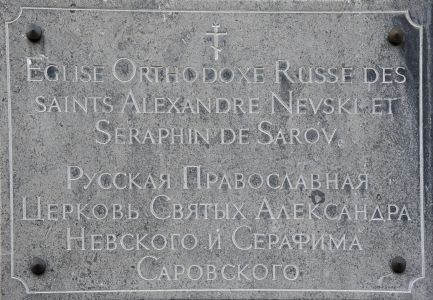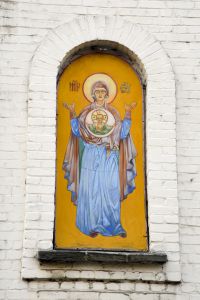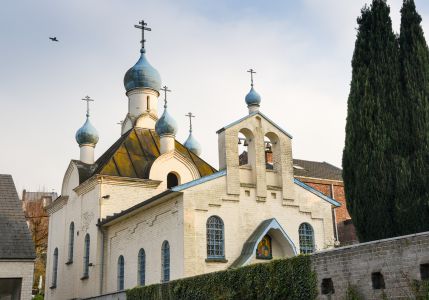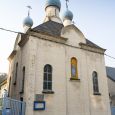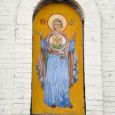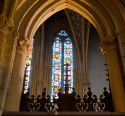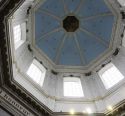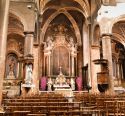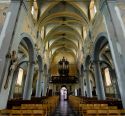Church | 1953 | Contemporary | Orthodox Church


Map
Opening hours
01 January - 31 December
Mon -
Tue -
Wed -
Thu -
Fri -
Sat -
Sun 10.00 - 14.00
High feast days: 10.00 - 14.00
First and last weeks of Great Lent: daily 10.00 - 14.00
Guided tour
For groups : +32 476 02 01 45
+32 475 47 74 01
An iconographic workshop offers individualized and advanced courses.
Information on iconruss.e-monsite.com or by phone +32 4 379 32 41
Religious offices
Description
Located at the foot of Cointe hill not far from the station of Guillemins, the Russian Orthodox Church has architecture typical of its home country with its 6 blue bulbous bell turrets.
It is also a witness to the life of the Russian community in the city since the end of the 19th century with its successive waves of students, exiles from the October revolution, miners, displaced persons after the Second World War and nowadays the new arrivals from the East. Today the community is also open to those of Belgian origin.
The church was destroyed in 1944 by a German V1 and was rebuilt in the style of traditional Novgorod churches with 5 cupolas in the shape of a bulb (plus an additional one over the main door).
Inside there are beautiful icons which encourage meditation.
Parish website in French
Website of the parish in Russian
Photos
Remarkable elements
Iconostasis
The iconostasis is simple, one might say classical, and leads to prayer and meditation. The icons were made in the middle of the 20th century by Parisian iconographers.
The building
The building, inaugurated in 1953, was built by Russian emigrants who had fled after the Bolshevik takeover. The previous place of worship - rue Mère-Dieu - had been destroyed by a flying bomb in 1944. The church on Rue du Laveu, designed by a Parisian architect who was also an immigrant, was inspired by the small churches of Novgorod. It was built with its own funds, the results of collections, appeals for donations and concerts by the choir.
Icon
Among the many icons, there is one of purely historical value (it is "bricolage"), but on the back there is an indication referring to a "church of the Annunciation" near the miners' camp in Sclessin. And two dates: 1947 - 1953. This is the only memory we have of these small chapels that were created by displaced persons and coal workers in the immediate post-war period.


